Accepted Scientific Name: Mammillaria nivosa Link ex Pfeiff.
Enum. Diagn. Cact. 11. 1837 et Beschr. Synon. Cact. 12 (1837). Type: cultivated plant, no specimens known, neotype undesignated. Pfeiff.
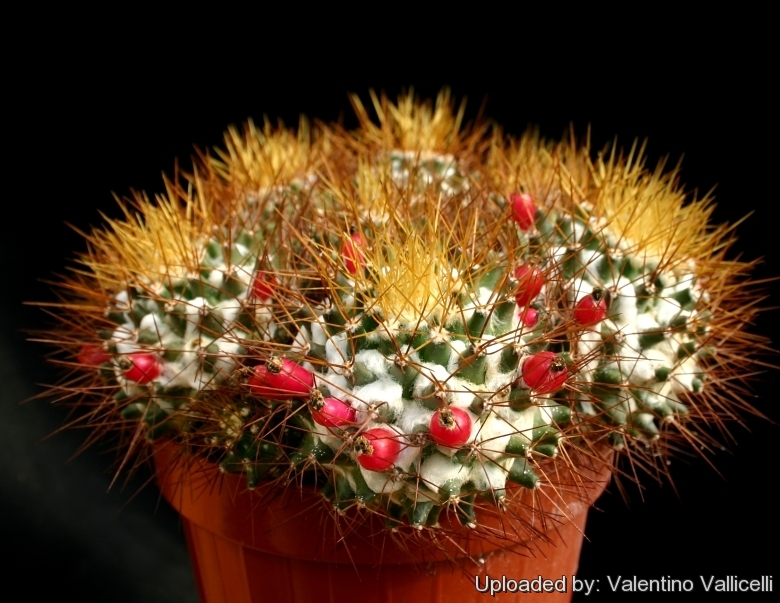
Cactus nivosus (Mammillaria nivosa) Photo by: Valentino Vallicelli
After producing several rounds of blooms earlier in the year it will give strikingly bright red fruit. This is a really beautiful cactus.
Origin and Habitat: Mammillaria nivosaSN|10335]]SN|10335]] has a wide distribution and is known from various locations on different islands in the Caribbean, the Bahamas, Puerto Rico (Mona, Desecho and Culebra Islands), US Virgin Islands (Buck Island, St. Thomas, Little St. James), British Virgin Islands (Tortola), Antigua and Barbuda, Cayman Islands, Jamaica, Turks and Caicos Islands.
Habitat and Ecology: It has been reported from naked limestone rocks. Its habitat quality is expected to be declining due to urban and tourism development. Almost all of the islands where this species occurs are tourist resorts. However, this species also occurs on Mona Island, which is a protected nature reserve, and presumably not affected by development.
Synonyms:
See all synonyms of Mammillaria nivosa
back
Accepted name in llifle Database:Mammillaria nivosa Link ex Pfeiff.Enum. Diagn. Cact. 11. 1837 et Beschr. Synon. Cact. 12 (1837). Type: cultivated plant, no specimens known, neotype undesignated.Synonymy: 12
back
Common Names include:
ENGLISH: Woolly Nipple Cactus, Nipple Cactus
Description: Mammillaria nivosaSN|10335]]SN|10335]] is a colourful cactus species, solitary but usually offsets a lot (mat forming). Old and well developed groups up to 40 cm in diameter (or more).
Stem: Globose to short cylindrical, dark green to bronze, 8 - 10 cm in diameter. With latex. Parastichy: 8-13, 11-17 and 13-21.
Tubercles: Obtusely conical, laterally compressed. The axil is densely woolly.
Radial spines: 6-13, straight and very sharp bright yellow to dark brown, to 20 mm long.
Central spines: Usually 1, similar to radials.
Flowers: Diurnal 2 cm yellowish. Stigmas yellow.
Blooming season: Early spring.
Fruits: Club shaped, dark red,
Seeds: Brown.
Bibliography: Major references and further lectures
1) Taylor, N.P. 2013. Mammillaria nivosa. The IUCN Red List of Threatened Species. Version 2014.3. <www.iucnredlist.org>. Downloaded on 31 January 2015.
2) John Pilbeam “Mammillaria The Cactus File Handbook” Cirio Pub. Services, 01/December/1999
3) Edward Anderson “The Cactus family” Timber Press, Incorporated, 2001
4) James Cullen, Sabina G. Knees, H. Suzanne Cubey "The European Garden Flora Flowering Plants: A Manual for the Identification of Plants Cultivated in Europe, Both Out-of-Doors and Under Glass" Cambridge University Press, 11/August /2011
5) David R Hunt; Nigel P Taylor; Graham Charles; International Cactaceae Systematics Group. "The New Cactus Lexicon" dh books, 2006
6) Urs Eggli, Leonard E. Newton “Etymological Dictionary of Succulent Plant Names” Birkhäuser 2004
7) Hunt, D. “A new review of Mammillaria names.” British Cactus and Succulent Society. Oxford. 1987
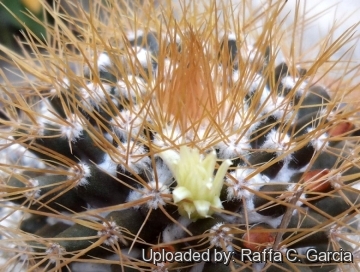 Cactus nivosus (Mammillaria nivosa) Photo by: Raffa C. Garcia
Cactus nivosus (Mammillaria nivosa) Photo by: Raffa C. Garcia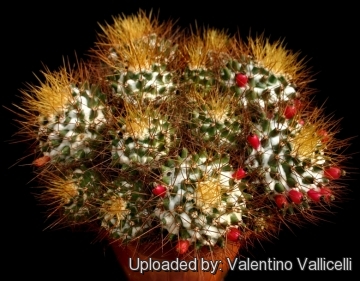 Cactus nivosus (Mammillaria nivosa) Photo by: Valentino Vallicelli
Cactus nivosus (Mammillaria nivosa) Photo by: Valentino Vallicelli Cactus nivosus (Mammillaria nivosa) Photo by: Valentino Vallicelli
Cactus nivosus (Mammillaria nivosa) Photo by: Valentino Vallicelli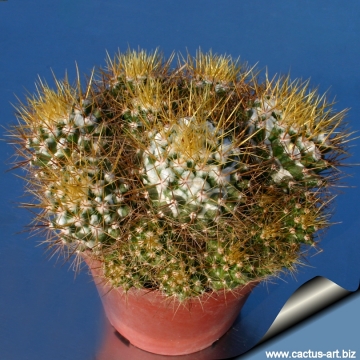 Cactus nivosus (Mammillaria nivosa) Photo by: Cactus Art
Cactus nivosus (Mammillaria nivosa) Photo by: Cactus Art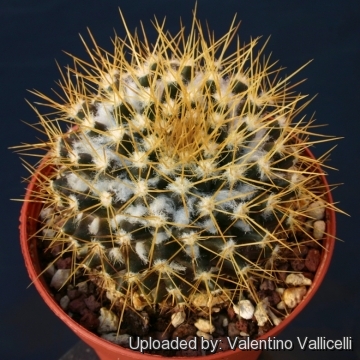 Cactus nivosus (Mammillaria nivosa) Photo by: Valentino Vallicelli
Cactus nivosus (Mammillaria nivosa) Photo by: Valentino VallicelliSend a photo of this plant.The gallery now contains thousands of pictures, however it is possible to do even more. We are, of course, seeking photos of species not yet shown in the gallery but not only that, we are also looking for better pictures than those already present.
Read More... Cultivation and Propagation: The Mammillaria nivosaSN|10335]]SN|10335]] is an easy to grow tropical Mammillaria, that doesn't take any frost.
Growth rate: It is a relatively rapidly growing and easily flowering speciesthat will make large clumps given the best conditions. Most plants will offset readily, and clumps can be produced in a few years.
Soils: It likes very porous soil with a fair amount of organic matter.
Repotting: Use pot with good drainage.
Watering: Water regularly in summer, but do not overwater (Rot prone), keep dry in winter. However it needs more water than its Mexican relatives and seems to tolerate moisture around the roots somewhat better than most species.
Fertilization: Feed with a high potassium fertilizer in summer.
Hardiness: Tender. Avoid any frost. Reputedly sensitive to low temperatures, but less so if kept on the dry side prior to, and during, cold weather. Warmth throughout the year will increase the grower's success.
Exposition: Outside full sun or afternoon shade, inside it needs bright light, and some direct sun. Subject to sunburn if exposed to direct sun for too long. Tends to bronze in strong light, which encourages flowering and heavy wool and spine production.
Uses: It is an excellent plant for container growing. It always looks good and stays small. It look fine in a cold greenhouse and frame or outdoor in a rockery.
Pests & diseases: It may be attractive to a variety of insects, but plants in good condition should be quite pest-free, particularly if they are grown in a mineral potting-mix, with good exposure and ventilation. Nonetheless, there are several pests to watch for:
- Red spiders: they may be effectively rubbed up by misting the vulnerable plants every day.
- Mealy bugs: occasionally they develop aerial into the new growth among the wool with disfiguring results, but the worst types develop underground on the roots and are invisible except by their effects.
- Sciara Flies: they are one of the major problems for seedlings. It is a good practice to mulch your seedlings with a layer of grit, which will strongly discourage the flies.
- Scales: they are rarely a problem.
It is wise to treat your whole collection with a systemic insecticide twice a year in spring and autumn.
- Rot: it is only a minor problem with mammillarias if the plants are watered and “aired” correctly. If they are not, fungicides won't help all that much.
Warning: It has very sharp and hard spines. You should use gloves or wrap the cactus with thick newspaper. They may make it easier.
Propagation: Division, direct sow after last frost. Seeds germinate in 7-14 days at 21-27° C in spring. To make a cutting twist off a branch and permit it to dry out a couple of weeks, lay it on the soil and insert the stem end partially into the soil. Try to keep the cutting somewhat upright so that the roots are able to grow downward.















